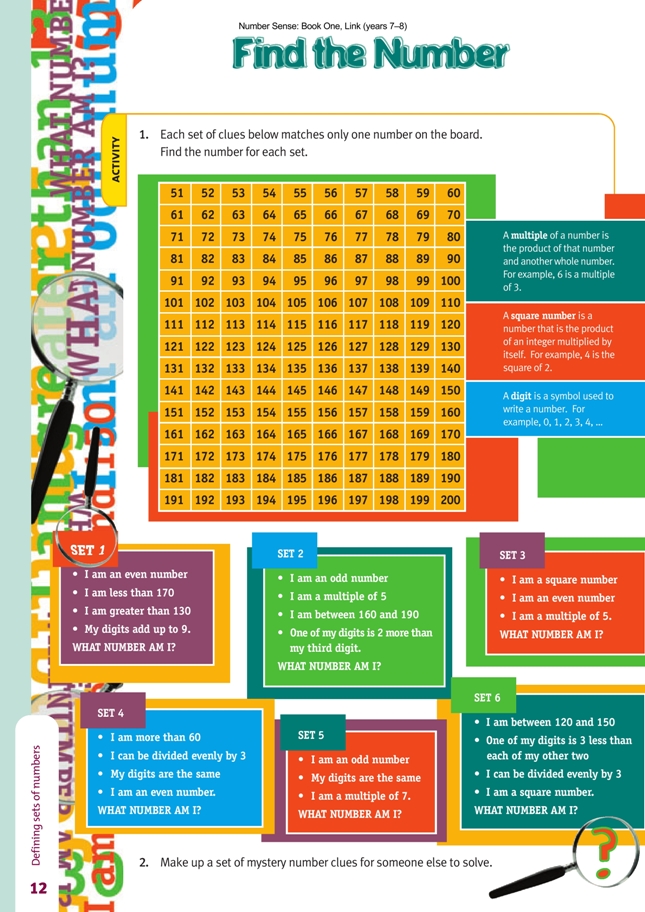This is a level 3 number activity from the Figure It Out series. It relates to Stage 6 of the Number Framework.
A PDF of the student activity is included.
Click on the image to enlarge it. Click again to close. Download PDF (563 KB)
identify a number from clues related to multiples, digits, square numbers
This activity challenges the students to use clues based on the properties of number to solve the problems. The number range selected in the activity encourages the students to develop a deeper knowledge of numbers between 50 and 200.
You may need to explain the number properties of odd, even, and square numbers and the meaning of the associated vocabulary (digit, multiple) before the students start working on a set of clues. You could divide the students into groups, with each group working on a different set of clues.
An alternative approach, which would heighten the activity as a problem-solving situation and also provide you with feedback about the entry knowledge of the students, would be to give out a set of clues to each group without giving them the accompanying board of numbers. Then tell them to use all the clues to find an unknown number and give them some process instructions, such as:
• One of the group must read out all the clues slowly twice.
• The group discusses the clues to identify those they understand and those they are not sure about.
• They write out the clues they are not sure about on the whiteboard.
• You or students from another group explain the meaning of the clues that they don’t understand.
• The group attempts to solve the problem.
• The group discusses strategies that might work, such as listing or highlighting numbers that are eliminated or remain after each clue until the solution is found.
It is best to have no more than four students in each group so that all the students can be involved in the discussion.
These clues can also be used in a more co-operative problem-solving situation if the group’s set of clues is copied onto paper and each clue is cut out separately. Give each student responsibility for one of the clues. They can read it out to the others, but they cannot hand it over. When a solution is proposed, they must check that it meets the requirements of their clue. If everyone in the group agrees, then this is the solution.
Answers to Activity
1. Set 1: 162
Set 2: 175
Set 3: 100
Set 4: 66
Set 5: 77
Set 6: 144
2. Clues will vary.
